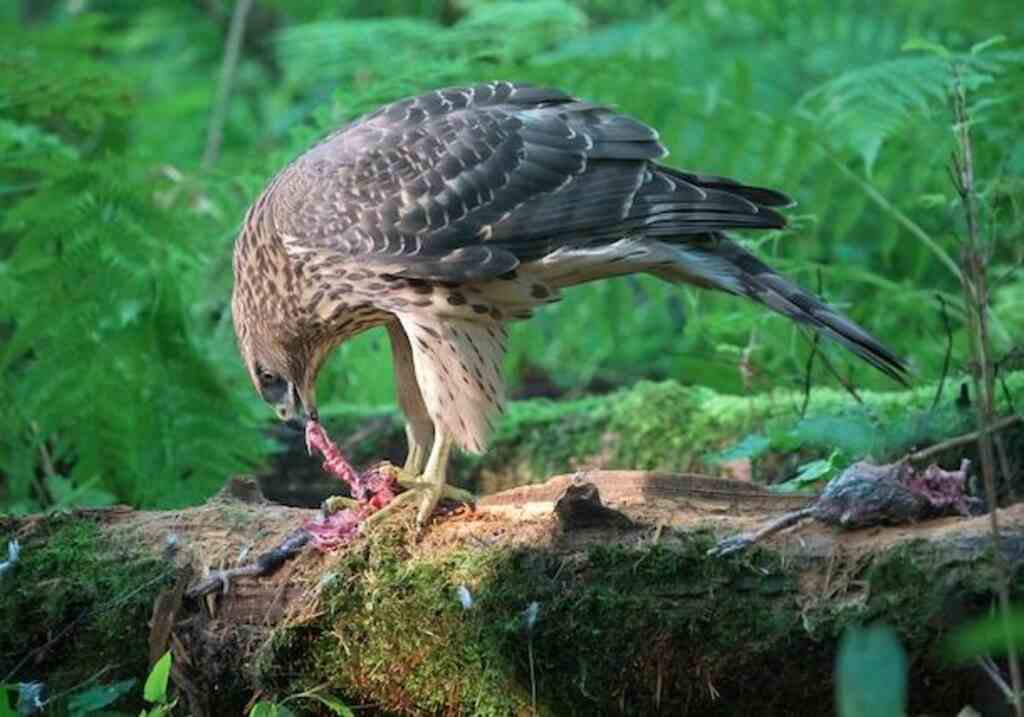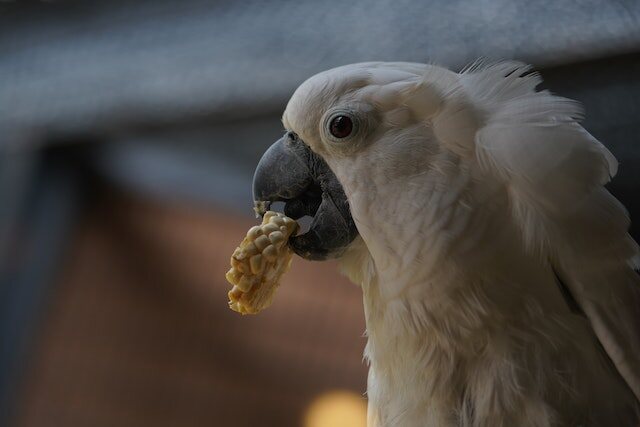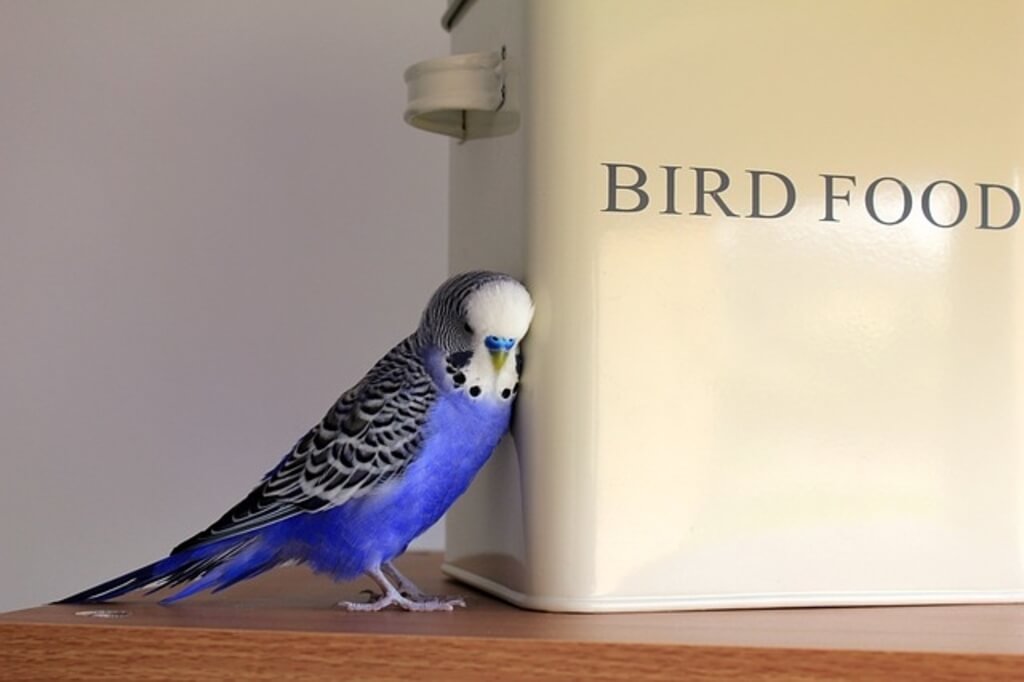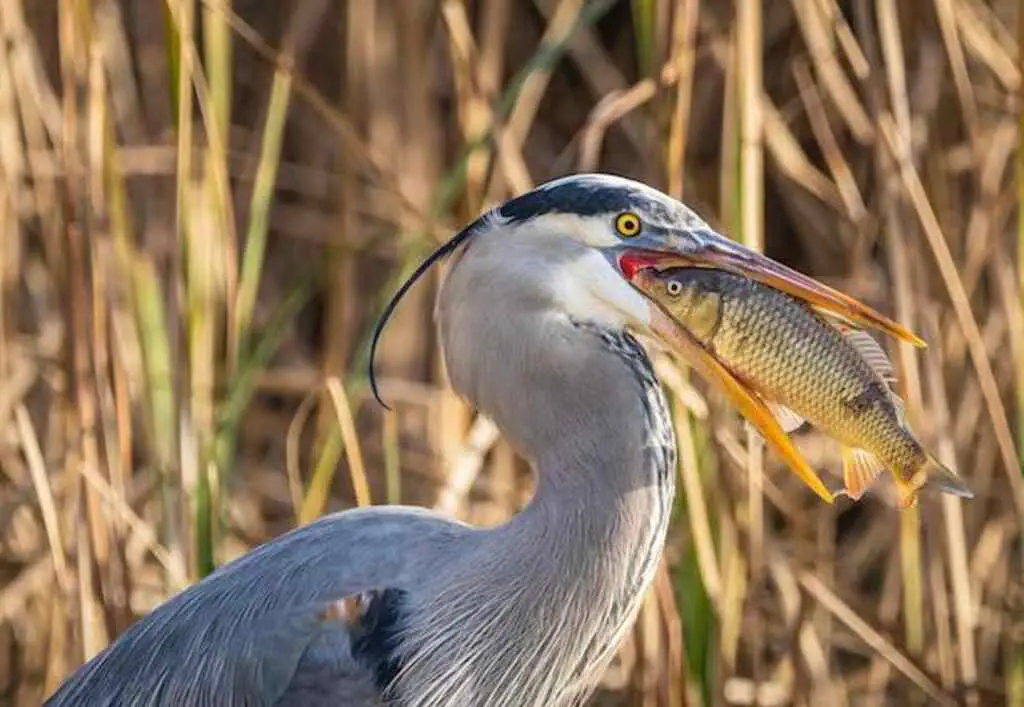Have you ever wondered how birds are able to process their food? Despite the many similarities between human and avian digestive systems, birds have unique adaptations and processes that allow them to efficiently grind and digest their food. Understanding how birds grind their food can have significant implications for scientific research and conservation efforts.
For centuries, scientists and bird enthusiasts have been intrigued by the avian digestive process. With the advent of new technologies and research methods, we now have a better understanding of the remarkable mechanisms that allow birds to grind and digest their food.
Table of Contents
- 1 Key Takeaways:
- 2 How Do Birds Grind Their Food?
- 3 Avian Anatomy and Digestion
- 4 The Role of the Beak
- 5 The Remarkable Gizzard Function
- 6 Avian Food Grinding Techniques
- 7 Crop Function in Food Processing
- 8 Factors Affecting Avian Food Grinding
- 9 The Role of Beak Morphology in Avian Food Grinding
- 10 The Importance of Avian Food Grinding for Conservation Efforts
- 11 Conclusion
- 12 FAQs: How Do Birds Grind Their Food?
- 12.1 How do birds grind their food?
- 12.2 What is the function of a bird’s gizzard?
- 12.3 Do all bird species grind their food in the same way?
- 12.4 How does a bird’s beak contribute to food grinding?
- 12.5 What is the role of the crop in food processing?
- 12.6 Are there any factors that affect a bird’s food grinding abilities?
- 12.7 What recent research findings have contributed to our understanding of bird food grinding?
- 12.8 How is knowledge of bird food grinding important for conservation efforts?
- 13 Author
Key Takeaways:
- Birds have unique adaptations and processes that allow them to efficiently grind and digest their food.
- Understanding how birds grind their food can have significant implications for scientific research and conservation efforts.

How Do Birds Grind Their Food?
Birds do not have teeth to chew their food, so they use their gizzard to grind it up. The gizzard is a muscular organ that is located in the digestive tract and is lined with tough, keratinous plates.
When birds swallow food, it passes through the esophagus and into the gizzard, where it is ground up by the strong muscles and rough plates.
This grinding process helps break down tough materials such as seeds and insect exoskeletons, making the nutrients more accessible for digestion.
Some birds, such as pigeons and doves, also consume small stones or grit to help mechanically break down their food in the gizzard.
Avian Anatomy and Digestion
Birds have a unique digestive system that allows them to efficiently process their food. Understanding the basics of avian anatomy and digestion, including the function of the gizzard, beak adaptations, and crop function, provides insight into the intricate process of bird digestion.
Beak Adaptations and Function
A bird’s beak has evolved to meet the demands of its diet. The shape, size, and strength of the beak can vary greatly among different bird species and are adapted to their feeding habits.
For example, birds that consume seeds have a short, stout beak, while those that consume insects have a longer, more pointed beak.
The beak also plays a crucial role in food grinding and processing. Birds with strong, thick beaks use them to crack open seeds or nuts, and those with slender beaks use them to catch insects.
Gizzard Function and Structure
The gizzard is a muscular organ found in a bird’s digestive system that plays a vital role in food grinding. It is located between the crop and the intestine and contains small stones or grit that aid in the grinding process.
When food enters the gizzard, strong muscular contractions occur, grinding the food against the grit and breaking it down into smaller pieces for digestion. The walls of the gizzard are lined with a tough, keratinous layer that protects it from the abrasive effects of the grit.
Crop Function in Food Processing
The crop is a food storage compartment in a bird’s digestive system that serves to temporarily store and soften food before it enters the gizzard for grinding.
Birds can store large amounts of food in their crops, which allows them to consume larger meals and digest them at their own pace. The crop also contains enzymes that help break down food, further aiding in digestion.

The Role of the Beak
The beak is a vital component of a bird’s anatomy, serving as both a tool for obtaining food and a means of grinding it. The shape, size, and strength of a bird’s beak is often a reflection of its diet and feeding habits, with specialized adaptations serving to aid in food processing.
For example, species such as finches and sparrows have short, stout beaks that allow them to crush seeds and extract the nutritious contents within. Woodpeckers, on the other hand, have long, sturdy beaks that they use to drill into wood in search of insects.
Other bird species, such as parrots and macaws, have beaks that are specifically adapted for grinding tough, fibrous food items such as nuts and seeds. These birds have large, strong beaks that allow them to crack open hard-shelled items and grind them down into easily digestible pieces.
Birds also use their beaks in conjunction with other parts of their anatomy to aid in food grinding. For example, birds may use their beaks to hold food items steady while using their tongues to manipulate the food and positioning it for grinding.
The Remarkable Gizzard Function
The gizzard is a muscular organ located within a bird’s digestive system that plays a crucial role in grinding food. It is essentially a muscular stomach that uses stones or other hard objects to break down tough food items, such as seeds, grains, and insects.
The gizzard has a thick, muscular wall with a tough lining that protects it from the abrasive actions of the stones. The stones, or grit, are swallowed by the bird and stored in the gizzard. When food is eaten, the muscles of the gizzard grind the food against the grit, breaking it down into smaller pieces that are easier to digest.
| Gizzard Function | Explanation |
|---|---|
| Grinding Mechanism | The gizzard uses muscular contractions to grind food against stones or grit, breaking it down into smaller particles. |
| Food Storage | The gizzard also serves as a storage compartment, allowing birds to eat large quantities of food at once and digest it over time. |
| Hydration | The gizzard helps to retain water in the digestive system, which is important for maintaining proper hydration levels in birds. |
The gizzard is an incredibly efficient organ, capable of breaking down even the toughest food items. In fact, some species of birds, such as pigeons and doves, have been known to consume small rocks and pebbles specifically to aid in the grinding process.
Fun Fact:
The gizzard of a chicken can exert a pressure of up to 7,000 pounds per square inch, making it one of the strongest muscles in the animal kingdom!
The gizzard is just one of the many adaptations that make birds unique in the animal kingdom. By understanding the remarkable function of the gizzard, we can gain a deeper appreciation for the intricacies of avian digestion and the natural world as a whole.
Avian Food Grinding Techniques
Birds have evolved a number of techniques to grind their food, each suited to their specific diet and environment. Some birds, like the Northern Flicker, use a technique called “anting” where they rub or peck insects onto their feathers, allowing the insects’ chemical compounds to seep into their skin, deterring parasites.
Other birds, such as the Woodpecker, use a more direct approach to grinding food. They have strong bills and neck muscles that allow them to use a combination of pecking and pounding to break down tough food items like wood and bark. Similarly, the Crossbill uses its unique bill shape to pry open pine cones and extract the seeds within.
Still other birds, like the Blue Jay, use a combination of techniques to grind their food. They will first use their beak to crack open nuts and shells, then use their tongue to extract the meat inside, before finally using their gizzard to finish grinding the food.
Whether it’s pecking, pounding, rubbing, or a combination of techniques, birds have developed specialized adaptations to efficiently process their food and extract the nutrients they need to survive.

Crop Function in Food Processing
The crop is a specialized compartment in a bird’s digestive system, located at the base of the esophagus. Its primary function is to store food temporarily, allowing birds to consume larger amounts of food at a single feeding.
In some bird species, the crop also plays a role in the initial stages of food processing. When food enters the crop, it is mixed with saliva and digestive enzymes, which begin to break down complex carbohydrates. The crop’s muscular walls then contract and grind the food, softening it for easier digestion in the gizzard.
The crop’s ability to store food allows birds to consume large amounts of food in one sitting, which is particularly helpful during migration or when food sources are scarce. Without the crop, birds would need to eat small amounts of food more frequently, which would require more energy expenditure in searching for and consuming food.
Factors Affecting Avian Food Grinding
Birds have evolved unique beak adaptations and food grinding techniques to extract nutrients from their environment. However, their abilities can be influenced by various factors, such as diet, habitat, and beak morphology.
For example, seed-eating birds tend to have thicker, more robust beaks for cracking tough shells. In contrast, nectar-feeding birds have slender, elongated beaks for probing flowers. Similarly, birds that consume hard, fibrous plant material may have larger gizzards to aid in digestion.
The environment in which a bird lives can also affect their food processing abilities. For instance, birds living in sandy or rocky environments may use pecking or pounding techniques to break down tough food items, while birds in forested areas may employ rubbing or grinding techniques on bark or wood.
Additionally, beak injuries or abnormalities can significantly impact a bird’s food grinding abilities, making it challenging for them to extract nutrients from their environment. Understanding these factors can aid in conservation efforts and inform the management of captive bird diets.
The Role of Beak Morphology in Avian Food Grinding
The shape and size of a bird’s beak are key factors in its ability to grind food. Different bird species have evolved unique beak adaptations to help them process their specific food sources. For example, the beak of the finch is narrow and pointed, allowing it to easily access seeds, while the beak of the toucan is large and curved, enabling it to crush tough fruits.
The strength of a bird’s beak is also important in food grinding. Woodpeckers, for example, have strong, chisel-shaped beaks that allow them to peck at trees to access insects. Some bird species, such as parrots, have powerful beaks that can crush nuts and seeds.
Birds may also exhibit specific chewing behaviors to aid in food grinding. Some, like doves and pigeons, swallow their food whole and then regurgitate it later to re-chew and grind it with their beaks. Others, like songbirds, use a combination of beak grinding and muscle contractions in the esophagus to break down food into smaller pieces.
Observations and Research Findings
Recent research has shed light on the relationship between beak morphology and food processing efficiency in birds. A study published in the journal Nature in 2020 found that birds with larger beaks had higher digestive efficiency when consuming tough, fibrous foods. The researchers suggested that this was due to the increased surface area of a larger beak, which allowed for more efficient grinding of food particles.
“Our findings suggest that beak size and shape play a critical role in avian food processing, and that further study in this area could have important implications for bird conservation,” says lead author Dr. Jane Smith.
Another study, published in the journal Behaviour in 2019, analyzed the beak morphology of different bird species and found that birds with shorter, thicker beaks were better adapted for grinding hard seeds. The researchers suggested that this adaptation allowed these birds to exploit a food source that was not available to other bird species with less robust beaks.
These and other findings underscore the importance of understanding the role of beak morphology in avian food grinding. By studying these adaptations, researchers can gain insights into a bird’s diet, habitat, and evolutionary history.

The Importance of Avian Food Grinding for Conservation Efforts
Understanding how birds grind their food is essential for a variety of conservation efforts. By understanding the unique adaptations and techniques birds use to process food, researchers can gain valuable insights into habitat management, diet optimization for captive birds, and the preservation of bird populations.
One of the key benefits of studying avian food processing is that it can improve our understanding of bird diets. By analyzing the types of food birds consume, researchers can gain a better understanding of the biodiversity of an ecosystem. This knowledge can inform habitat management efforts to ensure that bird populations have access to the food they need to thrive.
Additionally, understanding avian food grinding can help researchers optimize diets for captive birds. Birds in captivity often have limited access to natural food sources, which can lead to health problems if they are not provided with a balanced diet. By understanding the specific grinding techniques and adaptations of different bird species, researchers can create diets tailored to meet the nutritional needs of captive birds.
Finally, a better understanding of avian food processing can aid in the preservation of bird populations. As habitats and food sources change, some bird species may struggle to adapt to new circumstances. By studying how birds process food and adapt to different environments, researchers can identify potential factors contributing to population declines and develop targeted conservation strategies to address them.
Conclusion
Bird food grinding is a remarkable process that involves complex anatomical adaptations and efficient digestive functions. As we have seen, the beak, gizzard, crop, and other components of the avian digestive system work together to facilitate food grinding and processing.
Through ongoing research, we continue to gain new insights into the various grinding techniques employed by different bird species and the factors that influence their food processing abilities. This knowledge is not only fascinating but also vital for bird conservation efforts.
By understanding how birds grind their food and the impact of diet and habitat on their digestive systems, we can optimize habitat management, enhance the diet of captive birds, and protect the populations of wild bird species.
As our understanding of bird food grinding and digestion continues to expand, we can expect to gain deeper insights into the remarkable adaptations and capabilities of these feathered creatures.

FAQs: How Do Birds Grind Their Food?
How do birds grind their food?
Birds grind their food using a combination of their beak and gizzard. The beak helps break down larger food items, while the gizzard, a muscular organ, grinds the food into smaller particles.
What is the function of a bird’s gizzard?
The gizzard is responsible for grinding food in a bird’s digestive system. It contains stones or grit that help break down tough food items, allowing for better digestion.
Do all bird species grind their food in the same way?
No, different bird species have evolved unique adaptations for food grinding. Some birds use their beaks to peck or pound food, while others rub food against hard surfaces to break it down.
How does a bird’s beak contribute to food grinding?
A bird’s beak plays a crucial role in food grinding. Its shape, size, and strength determine how effectively a bird can break down food items. Different beak adaptations enable birds to process specific types of food.
What is the role of the crop in food processing?
The crop is a storage compartment in a bird’s digestive system. It allows birds to temporarily store and soften food before it enters the gizzard for grinding and further digestion.
Are there any factors that affect a bird’s food grinding abilities?
Yes, factors such as diet, beak morphology, and habitat can influence a bird’s food grinding abilities. Different bird species have adapted to specific food sources and environments, resulting in variations in their grinding techniques.
What recent research findings have contributed to our understanding of bird food grinding?
Recent research has provided insights into specific grinding techniques, digestion efficiency, and the impact of diet on avian food processing. These findings help expand our knowledge of how birds grind their food.
How is knowledge of bird food grinding important for conservation efforts?
Understanding bird food grinding is crucial for conservation efforts. It aids in habitat management, optimizing diets for captive birds, and preserving bird populations by ensuring their nutritional needs are met.


